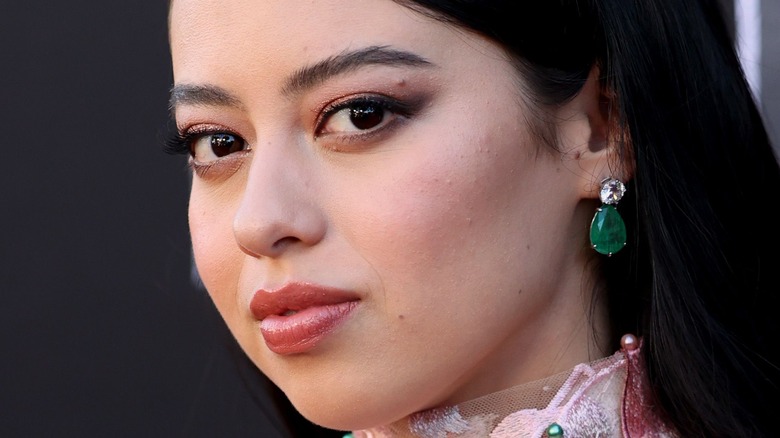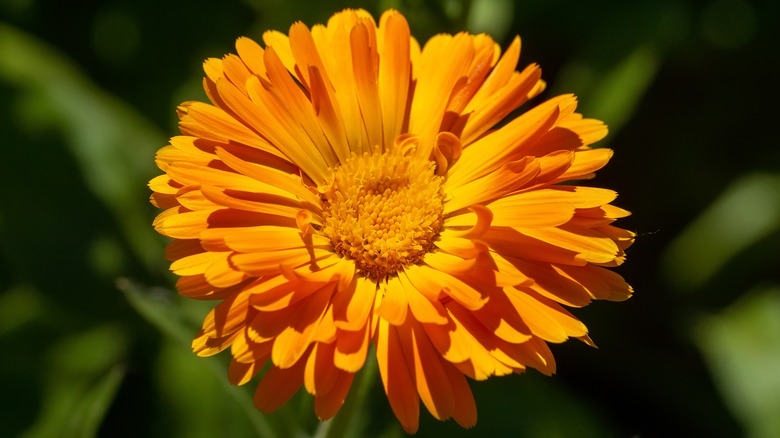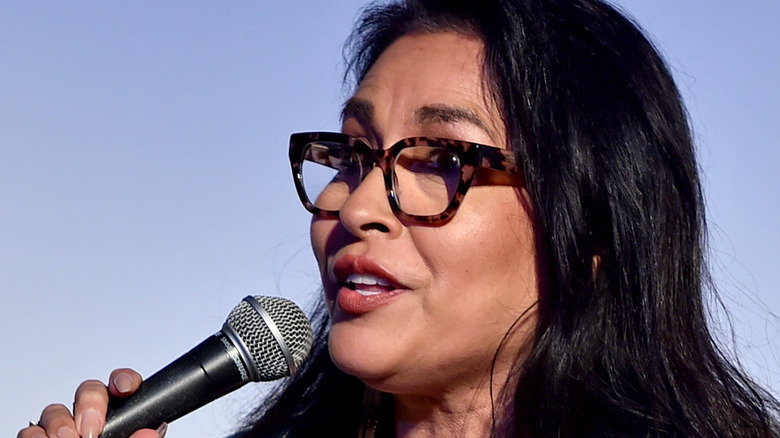The Truth About The Comanche Toothbrushes You See In Hulu's Prey
Hulu's "Prey" is an engaging prequel in the "Predator" franchise, set in the Great Plains region of North America. The story takes place in 1719 and it follows a young Comanche woman named Naru who aspires to be a hunter, played by actress Amber Midthunder (above) (via IMDb). In addition to great action sequences, "Prey" prioritized historical accuracy when it recreated what life was like at that time for the Comanche, including one scene in which Naru brushes her teeth.
Naru is able to defy expectations and prove herself when a vicious creature from outer space known in the "Predator" universe as a Yautja warrior arrives to terrorize Naru's tribe and family. Assiniboine Sioux actress Midthunder said (via The Guardian) that in the past, she carefully vetted Indigenous roles, concerned about representation. According to Midthunder, though, "Prey" was different. "For a period piece, it showed so much more cultural accuracy, instead of boiling us down to something one-dimensional," she said.
The orange blossoms in Prey are also based on real flowers
Also in "Prey," Naru uses an orange flower both as medicine and as a weapon in the film's climax. In the movie, those flowers are called orange totsiyaa, which according to producer Jhane Myers, speaking with "Predator" fan site AVP Galaxy, just means flower. Under that name, there's no clear historical corollary for the plant, but the on-screen depiction of the blossom shares many similarities to the calendula (pictured). A relative of the daisy and ragweed, calendula was used for medicinal purposes dating back to the 12th century, as Mount Sinai explains.
Just as in Hulu's movie, ground-up calendula was used in ointments and tinctures to treat injuries, cuts, and bruises, as Naru, her mother, and other members of her Comanche tribe are seen doing in "Prey" — sometimes in life-saving situations. And according to the Mount Sinai website, calendula is common in the part of the U.S. where "Prey" is set. The role of healer and medicine woman for Naru and her mother is also historically accurate to how medicine was practiced among the Comanche nation at the time that Hulu's movie takes place (via Tribal College Journal).
Native Americans cleaned their teeth with chew sticks
According to the Museum of Everyday Life, the first known bristle toothbrushes were used by the Chinese beginning around the seventh century A.D. Humans were concerned with oral hygiene before then, though, such as the Babylonians, who are known to have chewed sticks and branches to clean their teeth in 3500 B.C. In "Prey," Naru is seen cleaning her teeth in a similar fashion, and according to Midthunder, speaking with The Hollywood Reporter, details of that scene were drawn from extensive research materials provided by the movie's producer, Jhane Myers (pictured).
A member of the Comanche Nation, Myers was hired in part to give the film as much true-to-life detail as possible, such as an historically-accurate medicine, as well as toothbrushes or chew-sticks that indigenous populations in North America are known to have used (via The Indian Leader). On the topic of Native American representation in movies, Midthunder said of taking or refusing roles (via The Guardian), "A different level of care goes into choosing them because often the representation is not the best, especially for people who get so little representation." A trailer for Hulu's "Prey" is available to watch now on YouTube.


